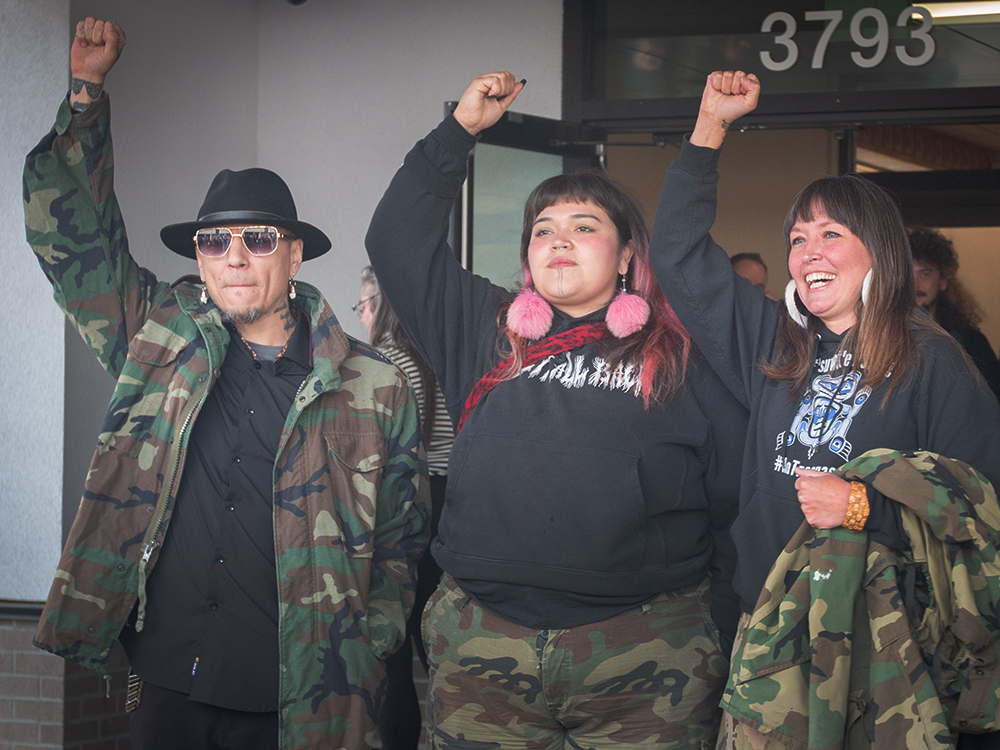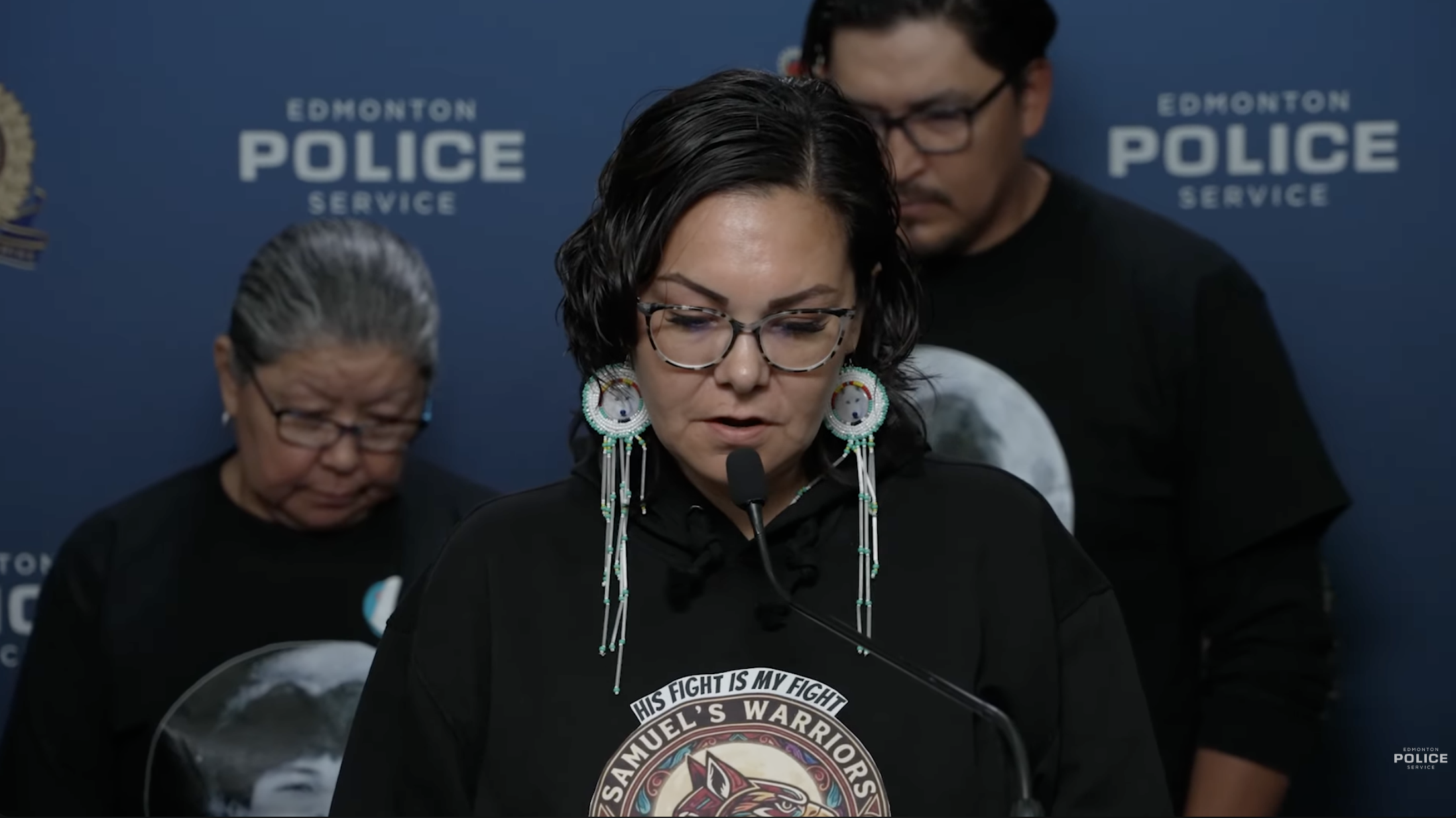Crow Girl: Indigiqueer graphic novel focuses on ‘glimmering moments of joy and hope’
In their mission to uplift Youth with a coming-of-age tale, jaye simpson and Valen Onstine found their own validation

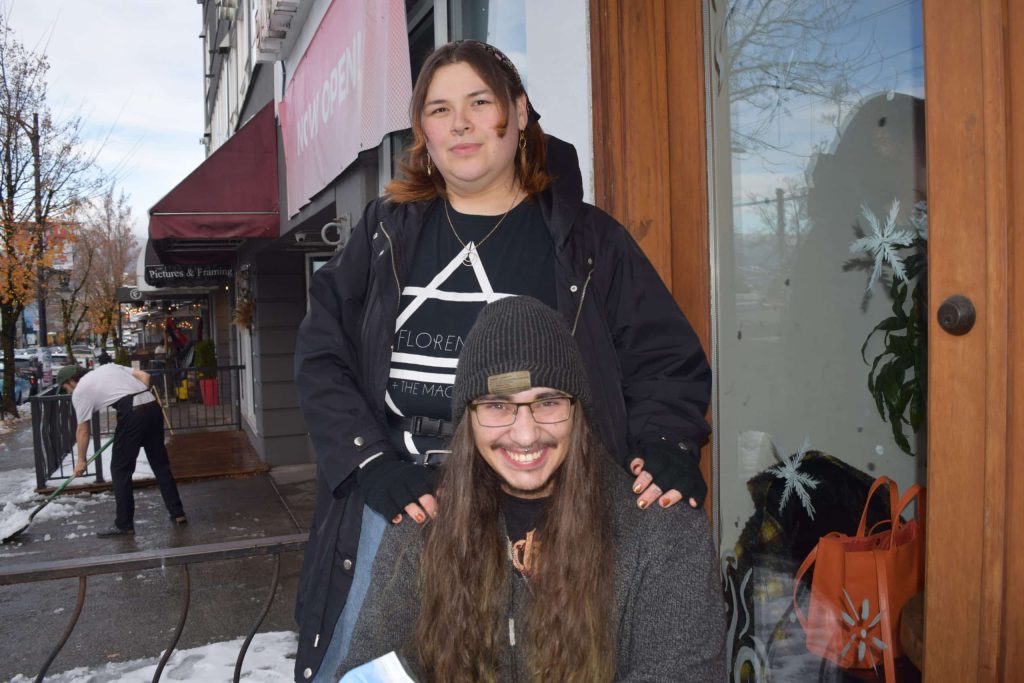
When they were growing up, artists jaye simpson and Valen Onstine always longed for more stories about queer and trans Indigenous joy.
That’s why, as adults, they began working together on a coming-of-age graphic novel that aims to affirm the experiences of children with similar paths to their own.
The writer and illustrator were recently awarded $96,300 from the Canada Council of the Arts to complete their book Crow Girl, which follows the story of a trans and Indigenous protagonist growing up in East “Vancouver.”
In turn, working on the project with Indigenous Youth in mind has validated both of them in ways they didn’t anticipate.
“I often wish I was allowed to be the queer child that I was, I wish I was allowed to be the Native child that I was. So, this is me wishing that for someone else,” says simpson, whose name is intentionally stylized as lowercase.
“Also, reaffirming some reassurance that queer Native Youth should be able to be queer Native Youth because they are children.”
‘I feel like I’m succeeding’
Author simpson is an Oji-Cree Saulteaux trans creative writer and drag performer from the Sapotaweyak Cree Nation, and Onstine, the primary illustrator for Crow Girl, is a Cree and Deneza trans visual artist from Horse Lake First Nation. Both of them grew up away from their home communities.
For Onstine, being awarded the grant for Crow Girl means he will finally be able to move into comfortable housing where he can focus on developing the novel’s primarily black-and-white illustrations.
“I have a bed that I miss for the first time in my life. I’ve been able to do things that are the markers you’ve made it, like getting decorative pillows,” says Onstine.
“I’m excited. Terrified. I feel like I’m learning everything all over again. But as things get closer to being real, I feel more excitement. I feel more joy. I feel like I’m succeeding. And I get to kind of quash that impostor syndrome.”
As for simpson, it feels affirming to know the Canada Council of the Arts — a Crown corporation whose grants are highly sought after by artists of all disciplines — finds the trans and queer Indigenous story worth funding.
“After years and years of being gaslit and being told, ‘are queer Indigenous stories worth telling?’ — they are,” says simpson. “And so that is very affirming that Canada Council of the Arts deems [Crow Girl] to be exceptionally valid and something worth exploring.”

Crow Girl will chronicle the joyous story of Quill Jones, a trans girl, and her diverse group of Indigiqueer friends living and going to school in East “Vancouver” — but everything isn’t as it seems.
“There’s magic realism, there are witches, there are crushes, high school plays and clubs and they’re just trying to deal with growing up,” says simpson.
“The dynamics of being young, Native, trans, what they want to do with their life but also realizing that they’re just 16, so they don’t have to decide.”
In the story, “crow girl” is a name that Quill is teased with by her high school bully because of her more-than-human relationship with crows. Quill’s relationship with crows is influenced by simpson’s real-life relationship with the playful crows in their East “Vancouver” neighbourhood.
“Every time I go and sit on my patio, all six of them appear,” simpson says.
“I just talk to them and they croak at me back. I’m pretty sure they do understand what I’m saying. They’re very playful … I really liked that human-animal relationship and how true they are and how they remember faces.”


Countering damaging stereotypes
It’s been imperative for both simpson and Onstine to share a story of a diverse group of trans and queer Indigenous Youth that will counter the overwhelming negative representations and stereotypes of queer and trans Indigenous Youth.
Often media representations of Indigenous queer Youth are people who are dying, dead or living a life only marked by unspeakable trauma — but as Onstine and simpson point out, Indigiqueer lives are so much more than oppression under the domination of colonialism.
Indigiqueer stories of joy, fun, and happy adolescent experiences are vital.
“We want to show the parts of identity-finding, community-finding and the parts of life that make you feel like life is worth living and brings joy,” says Onstine.
That sentiment is echoed by simpson, who says there’s an art to talking about challenges in a way that keeps the beauty and hope intact.
“My experiences have been full of queer trauma, yes, but it’s also been full of queer Native joy. So why not populate that story and focus on those moments and focus on these very beautiful things?” simpson asked. “Why not weave a story where there is a lot of beauty? There is going to be conflict, 100 per cent, but there are going to be so many glimmering moments of joy and hope.”
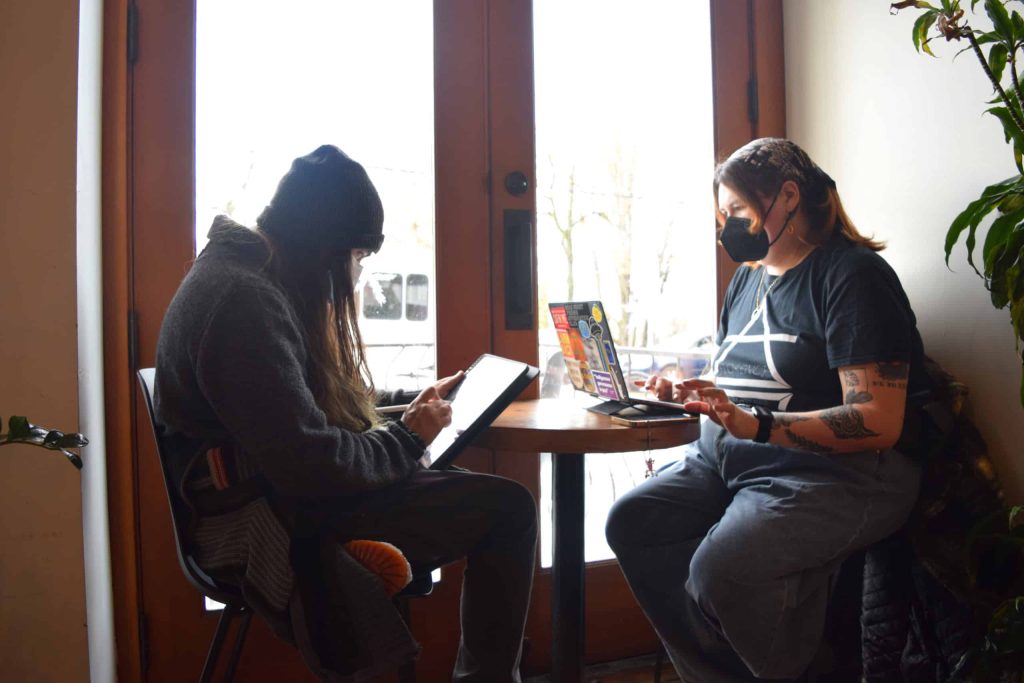
Embracing a joyous path
Onstine is a self-taught visual artist who has been practicing art since he was a child. Onstine’s initial preference for art is comics but he initially didn’t pursue comic book art styles because it seemed far-fetched and unrealistic.
“The question of if I wanted to illustrate a comic because it was a deep desire that I just kind of put down,” says Onstine.
“I’m doing a lot of research and reading comics and watching other people make comics and learning their thought process, their decisions, and how they choose to convey an emotion or a specific connection. There’s a lot of deep visual language that comes with comic making, that I’m excited to really digest and pick up again.”
Onstine and simpson met each other at Thompson Rivers University in Tk’emlúps (Kamloops) in an LGBTQ+ student club where they were the only Indigenous people. When simpson set out to write a graphic novel, they knew that Onstine was the one they wanted to embark on this journey with.
“His style is just so gorgeous, so emotive and so lively. I just think it would be a beautiful pairing.”
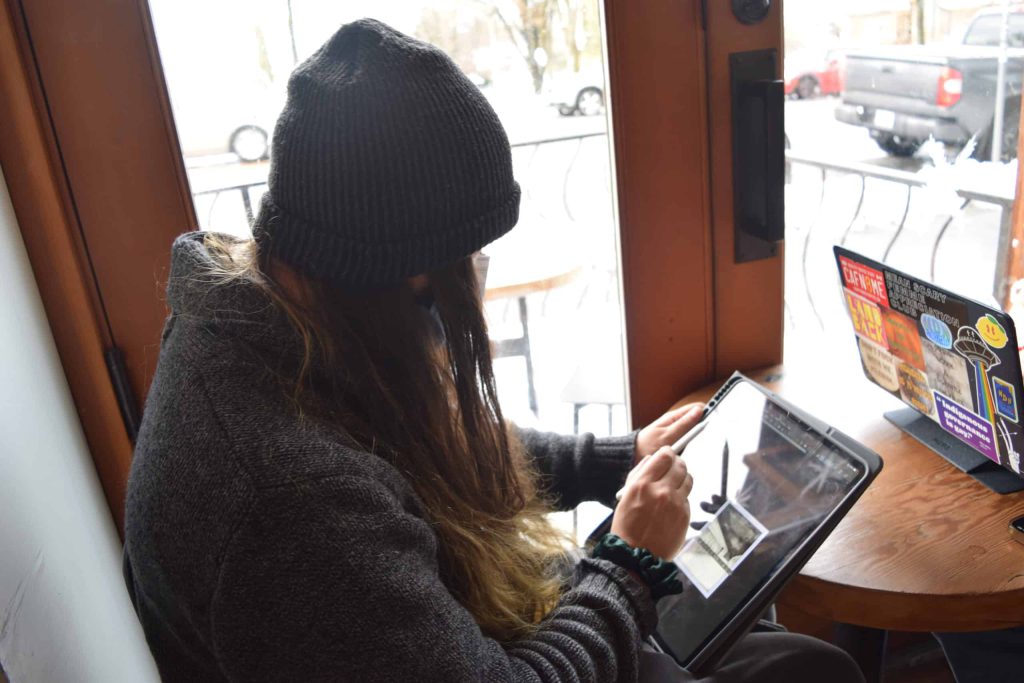
simpson and Onstine were awarded the Creating, Knowing and Sharing: The Arts and Cultures of First Nations, Inuit and Métis Peoples Short-Term Projects grant. The grant they applied for is specifically geared toward supporting the telling of Indigenous stories by Indigenous people. Because the grant simpson and Onstine applied for is the short-term stream, the project must be finished in one year.
simpson and Onstine applied for the grant with a detailed budget which included fair pay for themselves and community engagement, including ceremony, protocol, and community consultations. Onstine and simpson say they want to be able to fairly compensate the folks they will be consulting with to appropriately depict cultures and experiences that aren’t their own, in order to prevent harm through appropriation or misrepresentation.
Crow Girl is currently well on its way with the storyboarding for the first chapter nearly complete. They expect to launch the first iteration online and in print in the summer of 2023.
Author
Latest Stories
-
‘Bring her home’: How Buffalo Woman was identified as Ashlee Shingoose
The Anishininew mother as been missing since 2022 — now, her family is one step closer to bringing her home as the Province of Manitoba vows to search for her
-
Land defenders who opposed CGL pipeline avoid jail time as judge acknowledges ‘legacy of colonization’
B.C. Supreme Court sentencing closes a chapter in years-long conflict in Wet’suwet’en territories that led to arrests
-
Samuel Bird’s remains found outside ‘Edmonton,’ man charged with murder
Officers say Bryan Farrell, 38, has been charged with second-degree murder and interfering with a body in relation to the teen’s death



